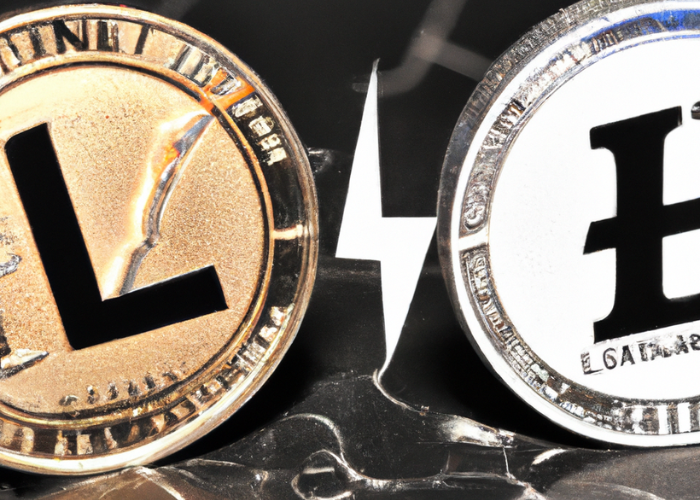
In the world of cryptocurrencies, Bitcoin and Litecoin stand as two of the most recognized and widely used digital assets. While both have similarities, being born out of the same ideological genesis and technical foundation, they differ significantly in various aspects like speed, mining algorithm, and market adoption. In this article, we’ll dive into an in-depth comparison between Bitcoin and Litecoin to help you understand which might be the better investment or tool for your needs.
History and Background
Bitcoin
Bitcoin, created by an unknown person or group of people using the name Satoshi Nakamoto, was introduced in a 2008 whitepaper. It’s the first-ever cryptocurrency and aims to offer a decentralized means of transferring value.
Litecoin
Litecoin was created by Charlie Lee in 2011 as a fork of the Bitcoin Core client. Lee aimed to create the “silver to Bitcoin’s gold,” focusing on making a lighter and faster version of Bitcoin. You can read more about its history on the Litecoin Foundation’s website.
Speed and Transaction Fees
Bitcoin
With a block time of approximately 10 minutes and varying transaction fees depending on network congestion, Bitcoin is often considered slower and more expensive for transactions.
Litecoin
Litecoin features a faster block time of 2.5 minutes, which allows for quicker confirmations. It also generally has lower transaction fees. This makes Litecoin more efficient for small and frequent transactions.
Mining Algorithm
Bitcoin
Bitcoin uses the SHA-256 algorithm, which is computationally more complex and requires specialized hardware known as ASICs (Application-Specific Integrated Circuits) for efficient mining.
Litecoin
Litecoin employs the Scrypt algorithm, initially designed to be resistant to ASIC mining, although ASICs for Scrypt now exist. Scrypt allows for more democratic mining on consumer-grade hardware.
Supply Limit
Both Bitcoin and Litecoin have a fixed supply limit, beyond which no new coins will be minted.
- Bitcoin: 21 million
- Litecoin: 84 million
Market Adoption and Acceptance
Bitcoin
Being the first cryptocurrency, Bitcoin enjoys more extensive acceptance and recognition. It’s often viewed as a store of value, somewhat akin to ‘digital gold’. You can read more about its market adoption in this CoinDesk report. Majority of people that are trading in peer to peer exchanges tend to buy bitcoin with PayPal, instead of Litecoin.
Litecoin
Litecoin, while popular, has not seen the same level of market penetration as Bitcoin. However, it’s increasingly being accepted by various vendors and is often used for smaller transactions due to its speed and lower fees.
Investment Potential
Bitcoin
Bitcoin is considered by many to be a long-term store of value and has shown a considerably higher return on investment over the years. However, it is also more volatile.
Litecoin
Litecoin’s investment potential is often considered to be strong but is generally viewed as less lucrative compared to Bitcoin. It’s often considered a good option for diversifying cryptocurrency investments.
Developer Activity
It’s crucial to note that Bitcoin has a larger and more active development community, which is vital for future improvements and forks. Litecoin does have a committed team but it’s comparatively smaller.
Risks and Limitations
Both cryptocurrencies have their share of risks, including regulatory scrutiny, potential for loss if keys are misplaced, and market volatility. To know more about the risks involved in cryptocurrency investments, check this Forbes article.
Conclusion
Both Bitcoin and Litecoin offer unique advantages and disadvantages. Bitcoin stands as the original cryptocurrency with a proven track record, broader adoption especially in the Gift Card to BTC market, and higher investment potential. On the other hand, Litecoin offers quicker and cheaper transactions, making it suitable for everyday use.
When considering Bitcoin vs Litecoin for investment or utilization, it’s crucial to evaluate your needs, investment goals, and risk tolerance. Diversifying your crypto portfolio by including both may also be a wise strategy.
For an even deeper dive into these cryptocurrencies, consider this comparative study by Cointelegraph.
By understanding the intrinsic strengths and weaknesses of Bitcoin and Litecoin, you can make a more informed decision on which cryptocurrency aligns better with your financial objectives.










